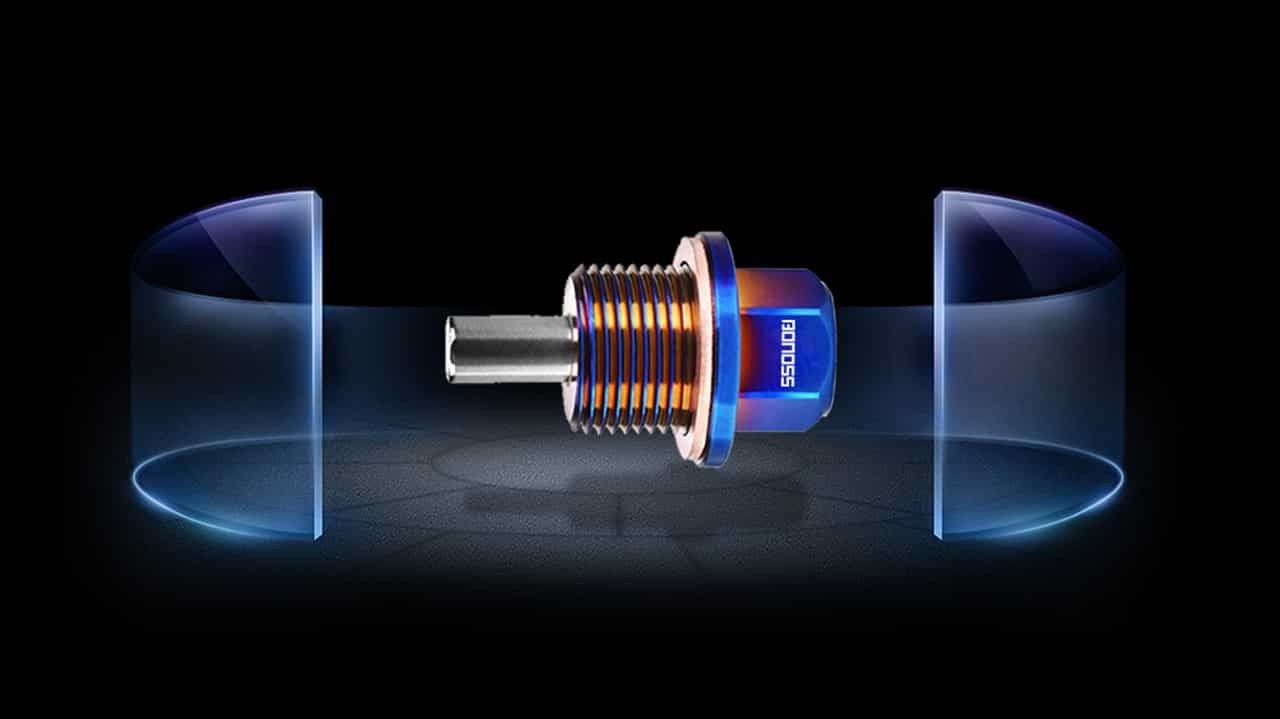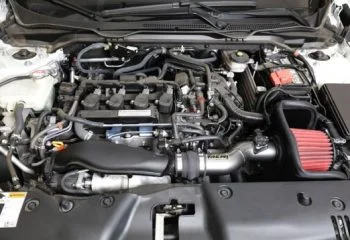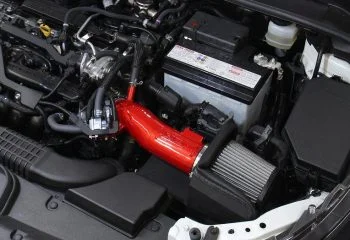When it comes to your car, it’s important to make sure all of the parts are in good working order. One such part is the oil plug. This small but essential piece helps keep your engine lubricated and running smoothly.
If you’re like most car owners, you probably don’t think about oil plugs until they start causing problems. And if you’re unlucky enough to have an over tightened oil plug, you’ll know just how frustrating it can be trying to get it loose again.
When changing your car’s oil, it is important to ensure the plug is properly tightened to prevent any leaks. Over tightening the oil plug can actually cause damage to the engine, so it is important to take care when tightening it. If you’re not careful, you can easily strip the plug and damage the threads in the process.
In this blog post, we will walk you through the process of how to remove an over tightened oil plug safely and effectively. Stay tuned!
What's in this post?
What is an oil plug and what does it do
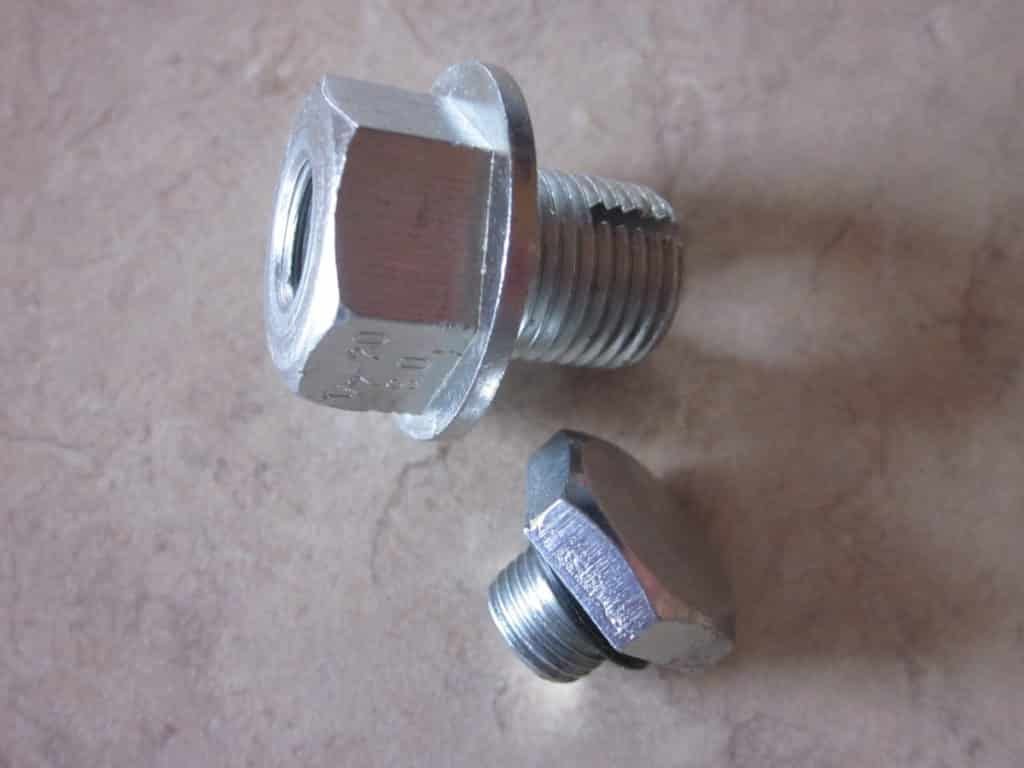
An oil plug, also known as an oil drain plug, is a small metal disk with a threaded center that is used to seal the opening of an oil pan.
The disk is inserted into the pan and screwed in place, forming a tight seal that prevents oil from leaking out. When the engine is running, oil circulates through the pan and lubricates the engine components. (See Which Engine Component Stores Oil For Lubrication?)
Over time, the oil can become dirty and break down, leading to deposits and sludge buildup. To prevent this, it is necessary to change the oil regularly.
The oil plug must be removed in order to access the oil pan and drain the old oil. Once the new oil has been added, the plug is screwed back in place, sealing the pan once again.
Why your oil drain plug stuck
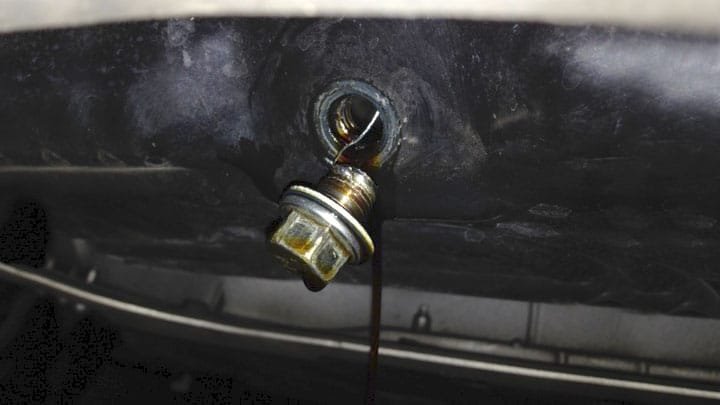
Many people don’t realize how important it is to change their oil regularly. Over time, the oil in your engine becomes less effective at doing its job.
This can cause the engine to run less efficiently and eventually lead to serious problems. If you don’t change your oil regularly, the oil drain plug can become stuck.
The oil drain plug is located at the bottom of the oil pan and is used to drain the old oil out of the engine. When the plug becomes stuck, it can be very difficult to remove it.
In some cases, you may need to use a special tool to loosen the plug. Alternatively, you may need to replace the entire oil pan. If you’re having difficulty removing your oil drain plug, it’s best to consult a professional mechanic.
Useful read: What Are Bad Oil Pump Symptoms And Replacement Cost
How to remove an over tightened oil plug
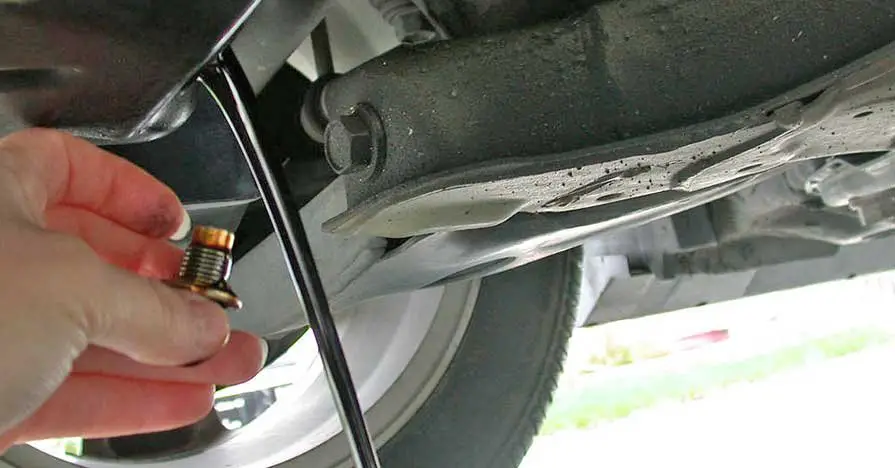
One of the most common mistakes people make when changing their own oil is over-tightening the oil plug. This can cause damage to the threads, making it difficult to remove the plug the next time you need to change your oil. If you find yourself in this situation, there are a few things you can do to remove the plug.
Here’s how to remove an over tightened oil plug:
- Start by letting the engine cool down. You don’t want to attempt this repair when the engine is hot, as you could easily get burned.
- Next, locate the oil plug. It’s usually located near the bottom of the engine, on the side that faces the ground.
- Once you’ve found the oil plug, use a socket wrench to loosen it. Be careful not to remove it completely, as you still need to drain the oil before removing the plug.
- If the plug is still tight, apply heat to the area around the plug with a hair dryer or heat gun. This will help to loosen the sealant that is holding the plug in place. Once the sealant is softened, you should be able to remove the plug with your socket wrench.
- If you still can’t get the plug loose, you may need to use a impact wrench or drill. Be sure to short bursts so you don’t damage the threads on the oil pan. With a little patience and care, you should be able to remove even the most stubborn oil plugs.
- After loosening the oil plug, place a drain pan beneath the engine and finish removing the plug. The oil should begin draining into the pan.
- Once all the oil has drained out, add the oil plug and tighten it securely with a wrench. Be careful not to over tighten it this time!
And that’s all there is to it. Just follow these simple steps and you’ll have your over tightened oil plug fixed in no time.
How to check if your oil plug is loose
Checking your oil plug is a simple but important task in maintaining your vehicle. The oil plug helps to seal the oil pan and keep the oil from leaking out. If the oil plug is loose, it can cause problems such as an oil leak or even engine damage.
To check the oil plug, simply remove the oil dipstick and look at the end of the threads. If they are dry or damaged, it is a good indication that the oil plug is loose.
Another way to check is to gently turn the oil plug with your fingers. If it turns easily, it is likely that it is loose and needs to be tightened.
When tightening the oil plug, be sure not to over tighten as this can strip the threads or break the seal. If you are unsure about how tight to make it, consult a professional mechanic.
Useful read: 5.3 Oil Pickup Tube O-Ring Symptoms and How to Replace It
How to tighten an oil plug that’s loose
One of the most common causes of oil leaks is a loose oil plug. If your oil plug is loose, there are a few steps you can take to tighten it.
- Remove the old oil plug and clean the threads on the oil pan.
- Apply a small amount of thread sealant to the new oil plug.
- Screw the new oil plug into the oil pan by hand, and then use a wrench to tighten it another quarter turn. Be careful not to over-tighten the oil plug, as this can damage the threads on the oil pan.
- If you’re still having trouble getting the oil plug tight, you may need to replace the gasket.
- Once you’ve replaced the gasket, screw the new oil plug into place and tighten it with a wrench.
Again, be careful not to over-tighten the oil plug. Following these steps should help you get a tight seal on your oil plug, preventing leaks.
How to replace the oil plug on your car

Replacing the oil plug on your car is not a difficult task, but it is important to do it correctly in order to avoid any leaks.
- Locate the oil pan and drain the oil into an appropriate container.
- Next, remove the old oil plug and clean the threads on the oil pan. Be sure to also clean the washer that sits on top of the plug.
- Once everything is clean, screw in the new oil plug and hand tighten it.
- Then, use an appropriate wrench to give it a final tightness. You may need to slightly loosen and retighten the plug a few times in order to get it tight enough without stripping the threads.
- Finally, refill your car with fresh oil and dispose of the old oil properly.
With just a few simple steps, you can easily replace the oil plug on your car.
What are the consequences of not replacing a stripped oil plug
Failing to replace a stripped oil plug can have a number of consequences for your vehicle.
First, it can cause an oil leak, as the plug will no longer create a seal. This can lead to decreased performance and fuel efficiency, as well as damage to your engine over time.
Additionally, it can be difficult to detect an oil leak if the plug is stripped, as the oil can seep out slowly. As a result, you may not realize there is a problem until significant damage has already been done.
Finally, not replacing a stripped oil plug can void your vehicle’s warranty.
Therefore, it is always best to replace a stripped oil plug as soon as possible to avoid any potential problems.
FAQs
Are oil drain plug reverse threaded?
When it comes to oil drain plugs, there is a lot of confusion about whether or not they are reverse threaded. The truth is, it depends on the vehicle.
In most cases, oil drain plugs are not reverse threaded, which means that they can be removed by turning them to the left.
However, some vehicles have reverse-threaded oil drain plugs, which means that they must be turned to the right in order to be removed.
If you’re not sure which type of oil drain plug your vehicle has, it’s always best to consult your owner’s manual or ask a certified mechanic.
Trying to remove a reverse-threaded oil drain plug without knowing for sure can strip the threads and cause serious damage.
How much does it cost to replace an oil drain plug?
Replacing an oil drain plug is usually a relatively inexpensive repair. Depending on the type of vehicle, the cost of the replacement plug and labor can range from $100 to $350. The cost is mostly from labor.
In most cases, the drain plug is located near the bottom of the oil pan, making it easy to access.
The repair typically involves draining the oil, removing the old plug, and installing the new one. In some cases, the gasket or seal will also need to be replaced.
With a few simple tools and a little knowledge, many people are able to perform this repair themselves. However, it is always best to consult a professional if you are unsure about any aspect of the repair.
How often should you replace oil drain plug?
If you use a proper wrench and torque the plug to the correct specification, the oil drain plug should last the life of your engine.
Of course, there are always exceptions to the rule, and if you notice that your drain plug is stripped or damaged, it is best to err on the side of caution and replace it.
However, as long as you take care when changing your oil, you shouldn’t have to worry about replacing your drain plug anytime soon.
Can oil plug fall out?
Oil plugs are an important part of many engines, and they play a vital role in preventing oil leaks. While it is possible for an oil plug to fall out, it is relatively rare. In most cases, oil plugs are held in place by a gasket or O-ring.
These seals can degrade over time, allowing the oil plug to become loose. If the oil plug is not tightened properly, it may eventually fall out.
If this happens, it is important to inspect the engine for damage and replace the oil plug as soon as possible. Failing to do so could result in serious engine damage.
Where is the oil plug?
The oil plug is typically located on the bottom of the engine, near the oil pan. In most cases, it will be a round, metal plug with a hexagonal head. In some engines, the oil plug may be recessed, making it more difficult to access.
If you’re having trouble finding the oil plug, consult your car’s owner’s manual or a mechanic.
Can I use Teflon tape on oil drain plug?
Teflon tape is frequently used as a sealant in plumbing applications, but it can also be used on oil drain plugs. When applied to the threads of an oil drain plug, Teflon tape creates a tight seal that prevents oil from leaking.
In addition, Teflon tape is resistant to high temperatures and will not break down like other types of tape. As a result, it is an ideal material for use on oil drain plugs.
However, it is important to apply Teflon tape correctly in order to ensure a proper seal. Before applying the tape, clean the threads of the oil drain plug with a wire brush or detergent.
Then, wrap the Teflon tape around the threads in a clockwise direction. Be sure to overlap the edges of the tape by at least half an inch.
Finally, screw the oil drain plug into place and tighten it firmly. With the Teflon tape in place, you can rest assured that your oil will not leak out.
How tight should I tighten my oil drain plug?
As with most things related to car maintenance, the answer to this question depends on a variety of factors. In general, however, it is advisable to tighten the oil drain plug to a torque of between 15 and 20 lb-ft.
This will ensure that the plug is tight enough to prevent leaks, but not so tight that it damages the threads. If you are unsure about how tight to make the plug, consult a professional mechanic. They will be able to advise you on the best way to proceed.
Can you over tighten oil drain plug?
Yes, it is possible to over tighten an oil drain plug. If the plug is too tight, it can damage the threads or strip the head. This can lead to oil leaks, which can be very damaging to your engine.
As a result, it is important to be careful when tightening the oil drain plug. Make sure to use a torque wrench, and follow the manufacturer’s recommendations for torque specifications.
If you are unsure about how tight to make the plug, it is best to consult a professional mechanic. They will be able to advise you on the best way to proceed.
How do I know if my oil drain plug is stripped?
There are a few signs that may indicate that your oil drain plug is stripped. First, you may notice that the plug is loose, even after you have tightened it. Second, you may see signs of an oil leak. Third, the engine may make a knocking noise when running.
If you notice any of these symptoms, it is important to have the problem diagnosed by a professional mechanic. They will be able to determine whether or not the oil drain plug is stripped and, if so, replace it with a new one.
Do you need a torque wrench for oil drain plug?
It is not strictly necessary to use a torque wrench when changing your oil drain plug, but it is definitely recommended. Without a torque wrench, it can be very difficult to know if you have tightened the plug sufficiently. This can lead to oil leaks, which are not only messy but can also damage your engine.
Using a torque wrench gives you a much better chance of getting the right tightness, and it only takes a few extra minutes. So, if you have one available, it is definitely worth using it for this job.
What size socket is a oil drain plug?
The average oil drain plug is 3/8 inch or 0.9 cm. However, some plugs may be slightly larger or smaller. Be sure to check your car’s owner’s manual to find the specific size for your vehicle.
If you’re not sure, you can always take the old plug with you to the store to compare sizes. Once you’ve found the right size socket, be sure to use it properly.
Improper use can strip the threads on the plug, making it difficult to remove in the future. With the right tools and a little patience, changing your oil drain plug should be a simple task.
Verdicts
Oil plugs are an important part of your engine and should be proper wrench and torque carefully every oil change.
As this blog post has shown, an over tightened oil plug can cause a lot of damage to an engine. It is important for mechanics and car owners alike to be aware of the potential consequences of this mistake in order to avoid it.
When it comes to removing over tightened oil plugs, there are a few different methods that can be used. The most important part is being patient and taking your time.
If the plug is too tight and you try to force it out, you could end up stripping the threads or damaging the plug. By following our instruction on how to remove an over tightened oil plug, you can avoid this mistake and get your oil plug removed safely.

